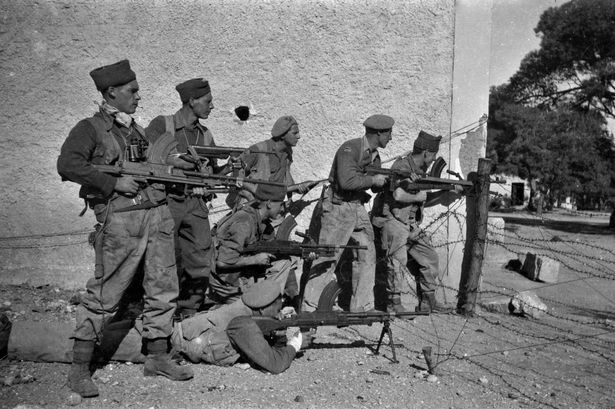The Special Boat Service is a special operations unit of the United Kingdom’s Royal Navy. Although little known in comparison to its famous cousin, the Special Air Service, the SBS also has its origin in World War II.
After the Fall of France in 1940, an isolated Britain marshalled its forces to defend the far-flung corners of its empire, but its future looked bleak. For one, the Soviet Union’s 1939 nonaggression pact and tidy division of Poland with Hitler made it seem neutral, if not friendly, toward an aggressive and expanding Germany. And for two, the United States was deeply isolationist and unwilling to engage Germany or Japan in open conflict.
Thus, Britain had a quandary: While the Battle of Britain and the overlapping Blitz bombing offensive had convinced Germany it could not invade and defeat Britain conventionally, Germany was effectively running the European continent. At the beginning of 1941, things were not looking good. The German U-boat fleet was running rampant in the Atlantic, and an increasingly expansionist Japan was virtually unchallenged. A notable exception to the bleak picture was North Africa, where British forces spent January mopping up what was left of an enormous Italian Army. But even that situation turned grim with the arrival of Rommel’s Afrika Korps the following month. Fortunately for Britain, however, 1941 would also be a year of three world changing events: Germany’s invasion of the Soviet Union in June, Japan’s attack on Pearl Harbor on December 7, and Germany’s declaration of war on the United States one week later.
Those events completely reversed the polarity of Britain’s situation, although its military options in the short run remained few. It wanted to hit the enemy hard, but it had limited industrial and manpower capacity with which to do so. Impressively, this combination of desire and limited resources gave rise to what are arguably the era’s most effective special operations units that continue in service today. The Special Boat Section, as the SBS was first called, was one product of this British attempt to create small, elite units for dangerous missions against precise targets.
Occupied Europe had one major weakness from the beginning: its coastlines. Because of their vastness, Germany was never able to effectively protect them. Dieppe in 1942 was a notable exception, but only as an instance of the Germans repelling a raid, not an actual invasion landing. What is more, American and British amphibious capabilities were immense and feared; so much so that 500,000 German troops languished in Norway at the end of the war, seeing no action at all, even while they were desperately needed on other fronts. Critical vulnerabilities to the Wehrmacht, Europe’s coastlines were the SBS’s playground during WWII.
Operating mostly at night, and via kayak, the SBS would slip into German-occupied Europe to perform reconnaissance, raids, and liaison missions with local resistance forces. During the early part of the war the SBS’s missions were small — often involving only a few men — and tailored to objectives such as acquiring detailed information about a specific facility, or raiding a very small but vital post.
As the war dragged on, the SBS expanded in size, operational capacity, and scope, but stealth remained among its top priorities. It is, therefore, not surprising that the SBS was among the first units to frequently employ suppressed weapons. Among those available during the SBS’s early years, the Welrod pistol, the De Lisle carbine, and various suppressed STENs are known to have been tremendous assets to special operations units during covert missions. Also contributing to the SBS’s stealth was the kayak — its original primary mode of transport, and one on which it still relies. From WWII through the present day, mission success for the SBS has often depended on its operators not being seen; its equipment has always been designed or selected with that in mind.
